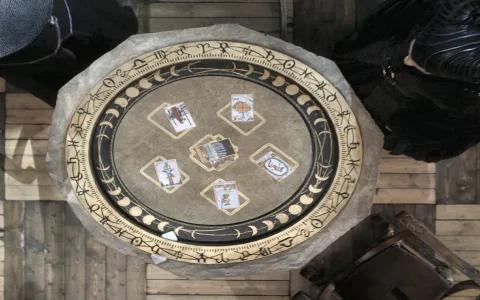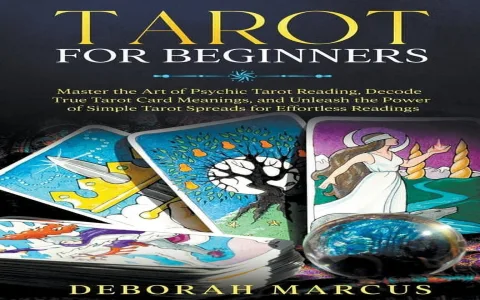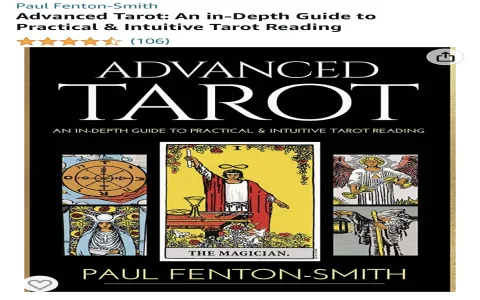How I Even Got Stuck on This Reversal Thing
Man, let me tell you, for the longest time, I absolutely hated reversed tarot cards. When I first started reading maybe ten years back, the books all said the same mushy stuff: “it’s the opposite meaning,” or “it’s just delayed energy.” It was so confusing, I basically ignored them. I’d pull a reversed card and just read it as a slightly weaker version of the upright. It felt safe, easy, but also totally useless when things got messy in real life.
The reason I finally got off my butt and started digging deep into reversals wasn’t some spiritual calling; it was pure professional embarrassment. I was doing a reading for my cousin—you know, the one who just started that weird business selling artisan dog treats. She was super excited, all go-go-go, but also bleeding money faster than a sieve. I pulled the Six of Pentacles, reversed. Traditionally, that means imbalance, being stingy, or bad debts. But she wasn’t stingy, she was throwing money at the problem, convinced it would fix itself. The reading just wasn’t clicking.
I felt like a complete fraud. I kept trying to fit her very real, very chaotic situation into the textbook definition, and it refused to go. That’s when I realized the books were too focused on the external result. They didn’t capture the internal mechanism breakdown. That failure, that feeling of letting her down because my tool wasn’t sharp enough, that’s what made me slam the door on the standard definitions and start my own personal research project.
Dumping the Books and Starting Fresh
I decided to treat the entire concept of reversals as if it were a brand-new system. I dragged out three decks and started the experiment. For three weeks straight, I wouldn’t do any predictive readings. I focused only on contrast. Every morning, I would draw five cards, lay the upright version next to the reversed version, and just stare. I didn’t pull out the guidebooks; I just let the images talk to me.
The biggest shift started with the Swords suite. Take the Three of Swords. Upright, it’s clear: external pain, heartbreak, betrayal. A dagger in the heart. When I looked at it reversed, it wasn’t suddenly happiness. It felt way worse. It felt like someone who couldn’t stop picking at the wound, who was reliving the betrayal constantly. It was internalized trauma, the refusal to heal, or maybe the painful truth finally being acknowledged after years of denial.
Then I hit the Knight of Cups. Upright, this guy is charming, emotional, maybe proposing. But reversed? He wasn’t just “not charming.” He became absolutely manipulative, emotionally immature, or someone who refused to commit to the feelings he was offering. He wasn’t opposite; he was toxic—the energy of the card twisted in on itself.
I documented everything. I would write down:
- Upright meaning: What is happening out there?
- Reversed meaning: What is blocking the energy, or how is the energy turning inward?
The breakthrough wasn’t about finding the “opposite.” It was about finding the blockage or the excess. If the upright card means flow and connection, the reversed card means the tap is either glued shut or running full blast, draining the reservoir.
The World Moment That Locked It In
The whole system finally crystallized when I pulled the Major Arcana, specifically The World card. Everyone loves The World. It’s the ultimate success. Completion. Integration. You nailed the thesis, you finished the journey, you hit the jackpot. It’s external, visible reward.
I looked at The World reversed, and I saw the biggest difference that changed my entire approach to tarot. It wasn’t failure, not exactly. It was:
The Refusal to Start the Next Cycle.
Think about it. The upright World means you finished. Now what? You have to move on, start something new, apply that learning to the Fool’s next journey. The reversed World felt like someone who achieved their big goal—got the degree, landed the dream job, won the race—and then just froze.
It’s stagnation within success. You’re trapped by the fear of losing the perfect status you achieved. You are physically complete (Upright definition), but internally, you are paralyzed (Reversed diagnosis). It’s the feeling that the party is over, but you refuse to leave the room. Or maybe, you are still running the marathon long after everyone else went home, because you don’t know how to stop.
This is the biggest difference I found: The upright tells you the potential or the current state of a matter. The reversed card tells you the specific, internalized, often psychological reason why that potential is not being realized, or why that state is feeling completely wrong. It’s the difference between seeing a locked door (Upright: blockage) and realizing you’re the one holding the key inside your pocket (Reversed: self-sabotage/blockage). It forces the querent to look inside themselves.
What This Means for Your Next Spread
So now, when I read, I don’t dread the reversals; I welcome them. They are the diagnostic tools. If I pull a reversed card like the Ace of Wands, I don’t just say, “No new ideas.” I ask: “Where are you actively refusing that surge of creative energy? Are you too scared to start?” If I see a reversed Empress, I don’t say, “You’re barren.” I ask: “Are you neglecting your own physical or creative needs? Are you smothering the people around you?”
It completely shifted my readings from fortune-telling to deep personal coaching. My cousin, by the way? Her reversed Six of Pentacles wasn’t about bad debts; it was about her refusing to structure the money going out because she secretly felt unworthy of running a successful business. Once we nailed the internal resistance, the external problem (the cash flow) started fixing itself. Forget opposites. Look for the friction. That’s where the real story is hiding.




